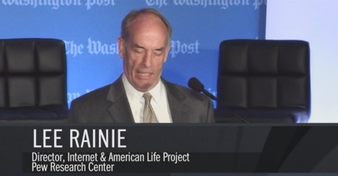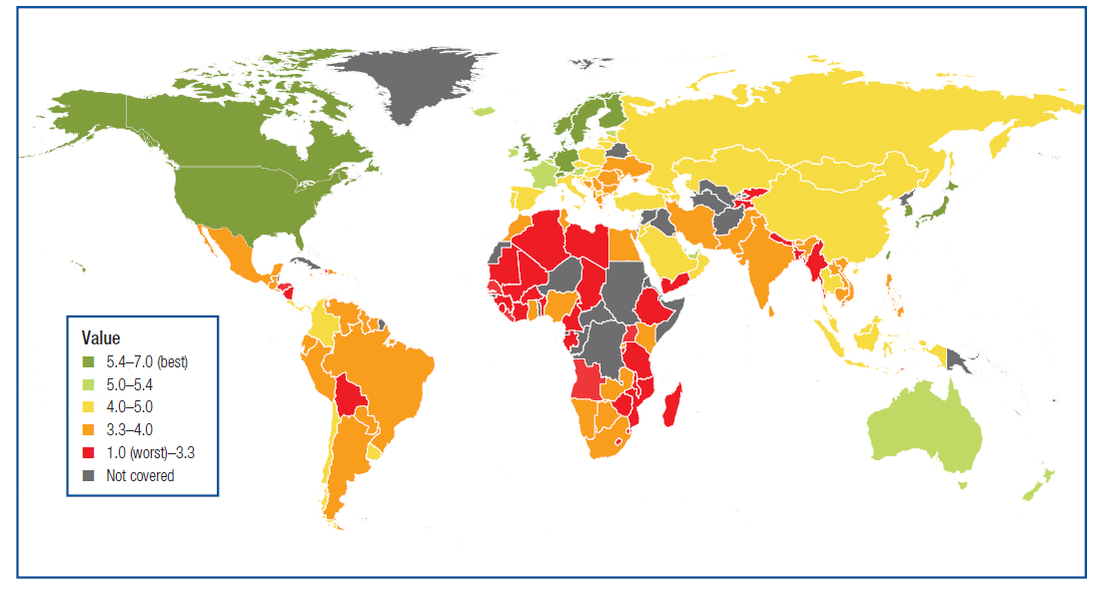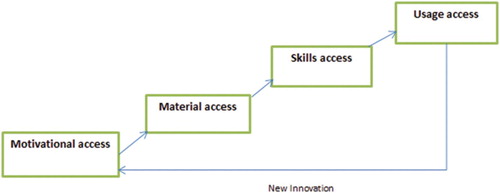Reasons For Digital Divide
We now live in a world where being ‘online’ is seen as vital. The growth of the world Internet penetration from the year 2000 to 2015 was 753% (Internet World Stats, 2014). The United States Department of Labour (SCANS) reported in 1992 that at least 80% of all jobs in the next two decades would require workers to be technologically fluent (Swain & Edyburn, 2007). Never before has it been more important to be able to have fair and reasonable access of the Internet and digital technologies. But even though there has been a rapid advancement of technologies the digital divide is still ‘alive and well’. More so in developing countries, but a recent research found that the original divide (the gap between those who have and do not have physical access to computers and the Internet) has developed a second divide that includes differences in the skills to use the Internet. The results showed that people with low levels of Internet skills failed to find information online which made them increasingly lacking. These people are now at risk at becoming further socially and economically disadvantaged (van Deursen & van Dijk, 2011).
The vast digital divide is clearly illustrated in the graphic below. The African continent is overwhelmingly coloured blue and grey, showing almost all countries have been ranked poorly according to the Network Readiness Index (NRI). (Bilbao-Osorio, Dutta, Lanvin, 2014).
Figure 4 Networked Readiness Index Map
from Bilbao-Osorio, Dutta, & Lanvin 2014, p.9.
from Bilbao-Osorio, Dutta, & Lanvin 2014, p.9.
here are several common factors attributing to the continued existence of the digital divide including: infrastructure, education and economy. While the physical gap is closing in developed countries (the haves and have nots) the skills gap and usage gap is growing. Digital divide research has historically been approached by survey methods. This produces useful data but does not result in explanations (van Dijk, 2012). For the purpose of this inquiry, we would like to address the reasons for digital divide using van Dijk’s 2005 Access Gaps Model (van Dijk, 2005). The model of access gaps explains the cumulative role of four types of access gaps including motivational access, material access, skills access, and usage access in shaping digital divide.
 Click on this image to listen to Lee Rainie's report on the Pew Research Center's findings.
Click on this image to listen to Lee Rainie's report on the Pew Research Center's findings.
Motivational Access
Motivational access is the desire to have access to ICT technologies and connection to the internet. The factors explaining motivational access divide can be social, cultural, mental and psychological. For example, low levels of education, income, computer anxiety and lack of time (Ghobadi, & Ghobadi, 2015). The most difficult area in which to a make a shift in the digital divide is not the ‘have nots’ but the ‘would nots’. The least amount of research on the digital divide is available in this area.
The latest findings from the Pew Research (Rainie, 2013) is that 15% of American’s do not use the internet. Twenty one percent of that 15% when surveyed said that they were not interested.
Material Access
Material access is succeeded by having motivational access to ICT and is also known as accessibility. Material access is influenced directly by income (Ghobadi, & Ghobadi, 2015). The overwhelming majority of digital divide research focuses on this area.
Global examples of this ranges from the extreme such as Palestine’s internet usage being 1.5% of its population (Internet World Stats, 2014 ). Due to cost and lack of ICT infrastructure there is no online learning in Palestine. Being in the conflict zone all funding goes to the basic needs like food and shelter. International aids have focused on the main needs of the people and ignored the development of ICT infrastructure (Barbour, et al., 2011).
In 2011, only 1% of the Mozambican people had internet access and there has been little increase with just 5.9% having access in 2015. (Miniwatts Marketing Group, 2015). Online learning in this country is extremely rare and when only 12% of the population have electricity this is no surprise.
According to the 11th Global IT report in developing Asia, 20% of individuals use the internet, 22% of households own a PC, 14% have access to the internet at home, and this has almost closed the gap with other advanced economies (Dutta & Bilbao-Osorio, 2012).
In the Americas, it seems the further south you go the greater the divide. In Canada, only seven percent of the population are not internet users (Internet Users, 2014). In the USA 13% of the population do not use the internet (Internet Users, 2014). Data from the Pew Research Centre (Rainie, 2013) shows that household income has a direct link to quality of internet access. An example of this is out of those who earn under 10,000 a year 70% have access to the internet compared to those who earn over $100,000 where 90% have access. The gap widens as we move further south with 59% of Mexicans, 48 % of Argentinians and 47% of Peruvians do not have access to the internet (Internet Users, 2014).
Skills Access
There are three different types of skills in this area they are:
- Operational skills - the ability to use the software and hardware.
- Information skills - the ability to search, select and process information in computer and network sources.
- Strategic skills - the ability to use computer and networks to reach a particular goal (Ghobadi, & Ghobadi, 2015).
Very little scientific research has been done on the actual digital skills possessed by people. However, we do know that those who have a higher education perform better on all skills compared to those with a lower educational background. Age also appears to be a significant contributor with younger people performing better than older (van Dijk, 2012).
Usage Access
Usage access refers to the differential use of applications in daily practices and also includes:
- time and frequency
- how active or creative internet use is
- quality of internet, e.g. broadband or dial up
Usage is largely linked to technical connections and demographic characteristics of users such as: social class, education, age, gender and ethnicity, and effectiveness of the connection (Ghobadi, & Ghobadi, 2015). We were surprised to find that there is still a digital divide between genders. Research showed a variety of ways in which women were behind men in the ownership of technology and the development of ICT skills. For example, men own and use computers and the Internet more than women, spend more time online, take more technology classes, and show more motivation to learn digital skills (Dixon et al. 2014).
How well do you think van Dijk's Access Gaps Model addresses the reasons for digital divide?
Head over to our discussions page to add your thoughts.
References
Barbour, M., Brown, R., Hasler Waters, L., Hoey, R., Hunt, J. L., Kennedy, K., . . . Trimm, T. (2011). Online and blended learning: A survey of policy and practice from K-12 schools around the world (pp. 1-30). Vienna. VA: International Association for K-12 Online Learning.
Bilbiao-Osorio, B., Dutta, S., & Lanvin, V. (2014). The Global information technology report 2014: Rewards and Risks of Big Data. Retrieved from http://www.weforum.org/reports/global-information-technology-report-2014
Dixon, L. J., Correa, T., Straubhaar, J., Covarrubias, L., Graber, D., Spence, J., & Rojas, V. (2014). Gendered space: The digital divide between male and female users in internet public access sites. Journal Of Computer-Mediated Communication, 19(4), 991-1009.
Internet World Stats. (2014). Retrieved from http://www.Internetworldstats.com/stats.htm
Miniwatts Markting Group. (2015). Internet World Stats. Retrieved from http://www.internetworldstats.com/stats.htm
Rainie, Lee. (2013). The State of the Digital Divides. Retrieved from http://www.pewinternet.org/2013/11/05/the-state-of-digital-divides-video-slides/
Swain, C., & Edyburn, D. (2007). Social justice choice or necessity? Learning and Leading with Technology, 14-18.
van Dijk, J (2005). The deepening divide: Inequality in the information society. Calif, London: Thousand Oaks.
van Dijk, J. (2012). The Evolution of the Divide: The Digital Divide turns to Inequality of skills and Usage. Digital Enlightenment Yearbook 2012. Retrieved from
http://www.utwente.nl/bms/vandijk/news/The%20Evolution%20of%20the%20Digital%20Divide/Evolution%20of%20the%20Digital%20Divide%20Digital%20Enlightment%20Yearbook%202012.pdf
Ghobadi, S., & Ghobadi, Z. (2015). How access gaps interact and shape digital divide: a cognitive investigation. Behaviour & Information Technology, 34(4).
van Deursen, A., & van Dijk, J. (2011). Internet skills and the digital divide. New Media & Society, 13(6), 893-911.


